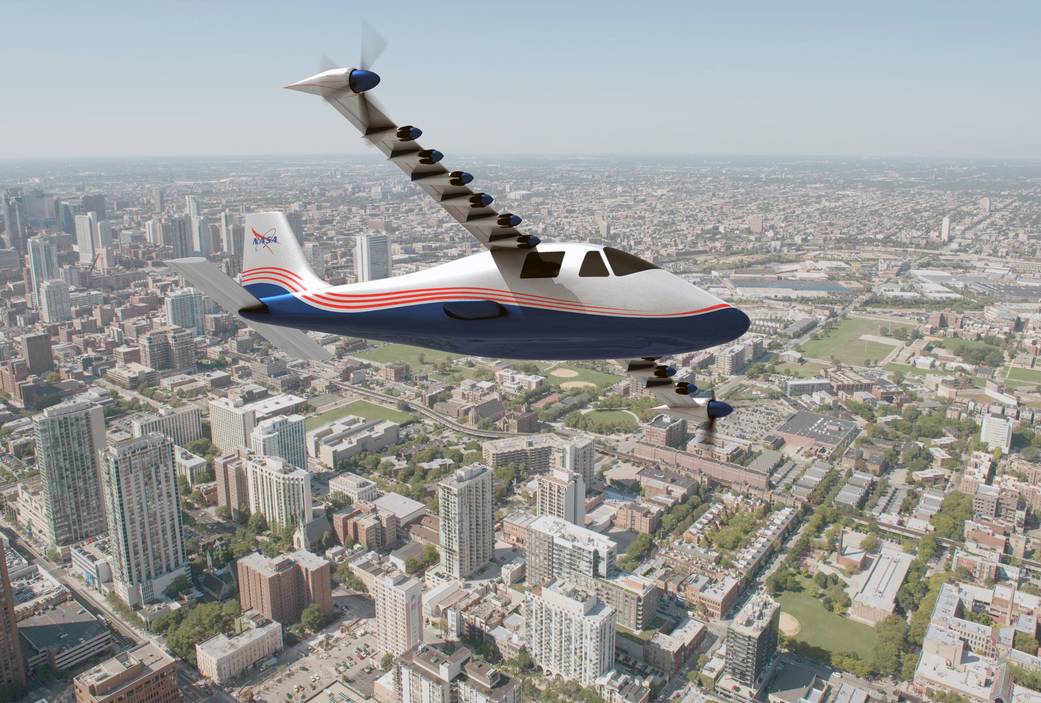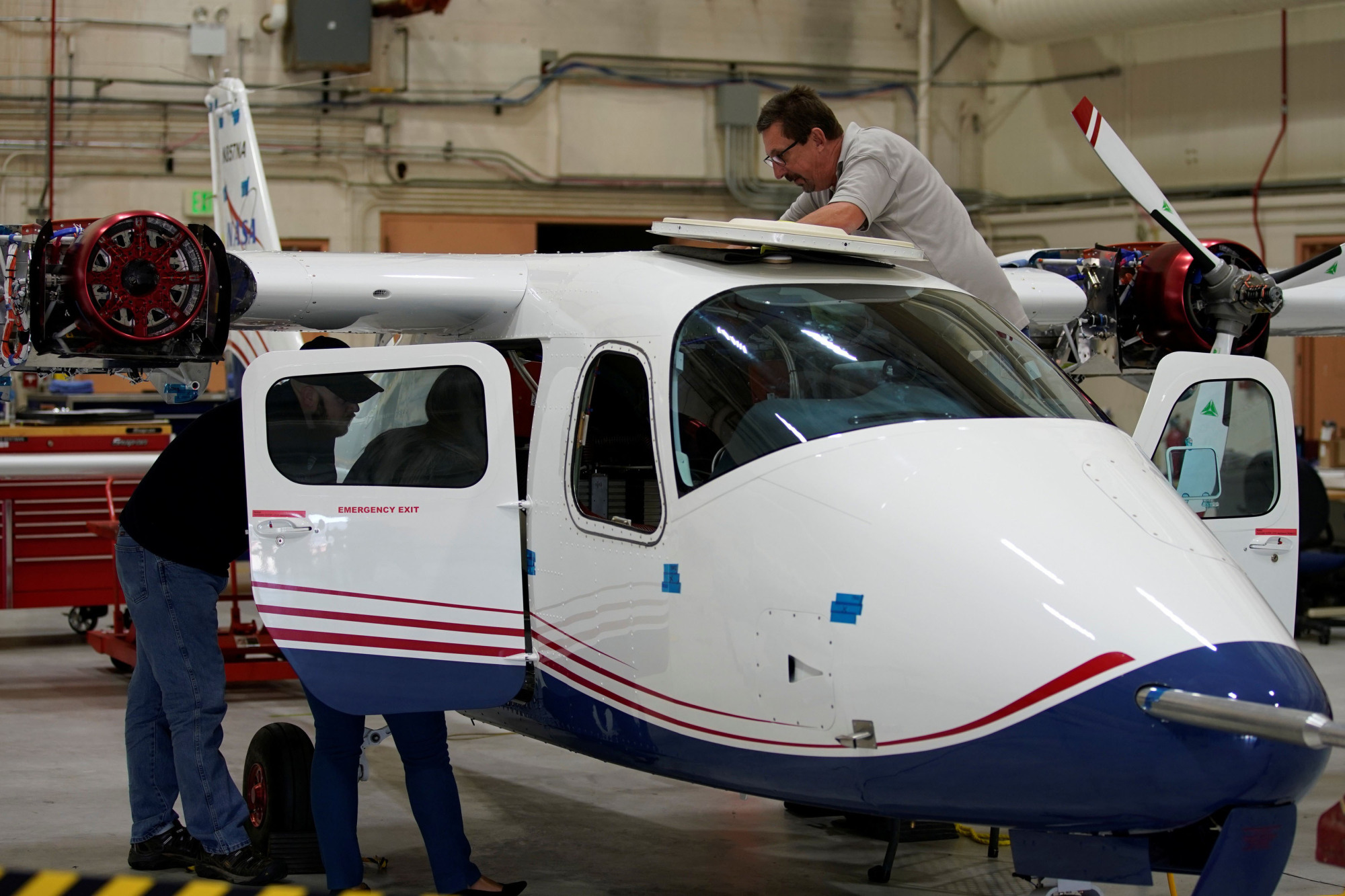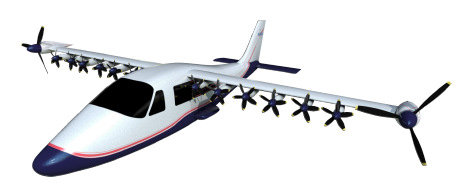X-57 Maxwell from NASA: the first “combat” flight of an electric plane is scheduled for the end of the year

X-57 Maxwell stands in the hangar at the air force base Edwards in California. It is NASA’s first experimental crewed aircraft in 20 years. It runs exclusively on electric power and will soon undergo ground functional testing of the systems ahead of its first flight, scheduled for late 2021.
The X-57 could revolutionize aeronautics. These aircraft are cheaper than conventional aircraft and have shorter flight times. Plus, electric planes are quieter and do not emit harmful emissions. Read more about the X-57 Maxwell – under the cut.
The experimental X-57 has been assembled since 2016 on the basis of a piston aircraft. Tecnam P2006T… The project is being implemented in stages. At the first stage, with the P2006T, the engines and the fuel system were dismantled, electrical preparation was carried out, a new instrument panel was mounted, and the batteries were installed. At the second stage, the aircraft was equipped with two electric motors with three-blade propellers. The motors are installed in the standard places of the piston engines. Further on the plane, the standard wing was replaced with a wing with a high aspect ratio.


What is the uniqueness of the project from NASA
A battery emulator is used to provide the aircraft with energy. This is the first time that low voltage and high voltage systems have worked together.
The new aircraft will have an exclusively electrical system and a power plant of 14 electric motors. 12 small ones along the wings – they work only during maneuvering, takeoff and landing, additionally blowing the wing and thus increasing the lift. Two large wing tips are used in cruise flight mode. In this case, small electric motors will stop, and the incoming air flow will fold the propeller blades, which will significantly reduce the drag. When the motors are turned on during landing, the centrifugal force will drive the blades into the working position.


Transatlantic flights on the X-57 are not yet available. The electric plane runs on batteries, the flight range of which is no more than 160 kilometers. But technology is advancing, and NASA expects next-generation aircraft to be lighter and longer in range.
What do we know about electric planes
Currently, electric aircraft are represented mainly by experimental models, which include both manned and unmanned vehicles.
The intention to use electrical energy in aviation has always been popular with environmentalists. In recent years, the development of electric aircraft has reached previously unimaginable proportions, especially in terms of environmental friendliness and energy efficiency.
The main nuances facing the manufacturers of large passenger airliners are the high electrical loads on board and the amount of energy that the power plant is capable of producing. The biggest obstacles to the electrification of the aviation industry today are technologies that limit the weight of batteries and the amount of energy produced during flight. The energy capacity of lithium-ion batteries is more than 10 times less than the energy capacity of kerosene fuel. The mass of an electric plane is constant during flight, unlike airplanes that use fuel. Indeed, as it is depleted, the mass and the necessary lifting force decrease, which allows you to fly in a more economical mode.
For new technologies to become applicable in “big” aviation, the next generation of power plants must produce colossal amounts of energy. At the same time, batteries must be simultaneously less in weight and size than lithium-ion counterparts available today.
Below are the most famous electric aircraft projects:
- Extra 330LE
- Solar impulse 2
- Pathfinder
- QinetiQ Zephyr
- Long-ESA
- Airbus E-FAN
- Aquila
- Alpha electro
- eFlyer 2
The harm of modern aviation to the environment and climate
Airplanes emit huge amounts of carbon dioxide and water vapor, nitrogen oxides and soot into the atmosphere. Unlike other modes of transport, aviation travels enormous distances, affecting air quality locally, regionally and globally.
Aviation impact the atmosphere can be divided into acoustic and chemical.
Aircraft noise affects a relatively large number of people living in the vicinity of airports, as well as airport workers and passengers. The consequences for people are expressed in hearing impairment, stressful conditions, problems with concentration.
Chemical air pollution at airports is represented by aviation emissions such as oxides of carbon, nitrogen, sulfur, hydrocarbons and particulate matter from engines and the combustion of aviation fuel. Aviation-related emissions pose a potential public health and environmental risk as they can increase ground-level ozone and lead to acid rain.
Particular attention is also paid to the impact of aviation on the environment related to water quality, waste collection, energy consumption, impact on the local environment near airports (prevention of fuel leaks).
Most aviation fuel is burned in the higher layers of the atmosphere. Experts believe that the annually increasing emissions of carbon dioxide, water and methane from commercial aircraft engines change the chemical and radiation balance of the atmosphere, which, along with the emission of soot sulphate aerosols, can affect the climate. Greenhouse gases, whose emissions can affect global warming, are of particular concern among aviation fuel combustion products.





